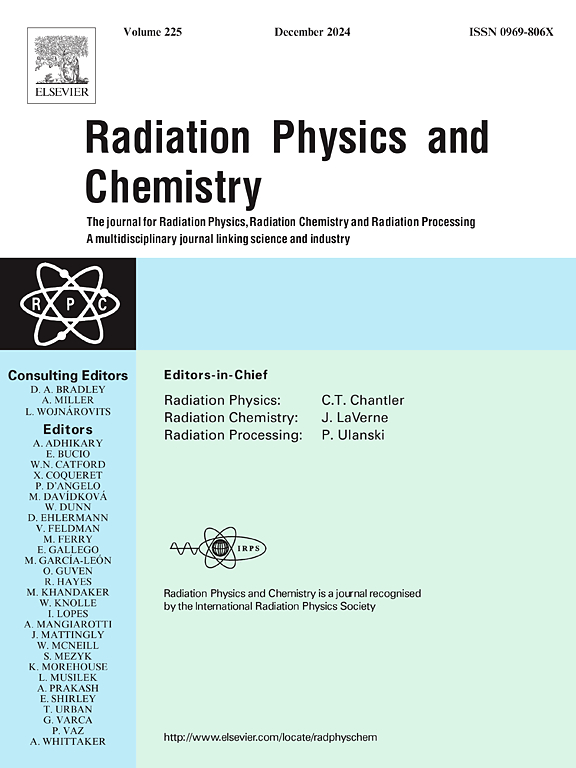基于XGBoost的光子有效剂量预测:一种用于放射防护的机器学习方法
IF 2.8
3区 物理与天体物理
Q3 CHEMISTRY, PHYSICAL
引用次数: 0
摘要
国际放射防护委员会(ICRP)开发了剂量转换系数(DCC),使用根据人体器官物理特征计算的拟人化幻象的有效剂量。计算技术和蒙特卡罗代码的进步改进了这些模型。机器学习(ML)越来越多地应用于辐射物理学,通过处理大型DCC数据集,有望增强辐射防护和个性化剂量学的剂量预测。本研究收集了代表不同人口统计学特征的各种幻影的光子DCC数据,并通过清洗和分割进行了制备。采用贝叶斯方法优化的极限梯度增强(XGBoost)模型预测器官和有效剂量。结果表明,在30 keV以上的能量中,KERMA DCC的均方误差较低,而fluence DCC的R2值较高。然而,在较低能量下对两组的预测都不太准确。这项工作通过提供蒙特卡罗模拟的快速替代方案,突出了ML在彻底改变个性化剂量学方面的潜力。未来的研究应该完善低能量范围的预测,并纳入额外的特征,以进一步提高模型的准确性。本文章由计算机程序翻译,如有差异,请以英文原文为准。
Photon effective dose prediction using XGBoost: A machine learning approach for radiological protection
The International Commission on Radiological Protection (ICRP) developed dose conversion coefficients (DCC) using effective dose calculated for anthropomorphic phantoms based on human organs physical characteristics. Advances in computational technology and Monte Carlo codes have refined these models. Machine Learning (ML), increasingly applied in radiation physics, shows promise for enhancing dose prediction in radiation protection and personalized dosimetry by handling large DCC datasets. This study collected photon DCC data from various phantoms, representing diverse demographics, and prepared it through cleaning and segmentation. The eXtreme Gradient Boosting (XGBoost) model, optimized with Bayesian methods, was used to predict organ and effective doses. Results showed high accuracy for energies above 30 keV, with KERMA DCC yielding lower Mean Squared Error and fluence DCC exhibiting higher R2 values. However, predictions at lower energies were less accurate for both sets. This work highlights ML's potential to revolutionize personalized dosimetry by providing a fast alternative to Monte Carlo simulations. Future research should refine predictions for lower energy ranges and incorporate additional features to further enhance model accuracy.
求助全文
通过发布文献求助,成功后即可免费获取论文全文。
去求助
来源期刊

Radiation Physics and Chemistry
化学-核科学技术
CiteScore
5.60
自引率
17.20%
发文量
574
审稿时长
12 weeks
期刊介绍:
Radiation Physics and Chemistry is a multidisciplinary journal that provides a medium for publication of substantial and original papers, reviews, and short communications which focus on research and developments involving ionizing radiation in radiation physics, radiation chemistry and radiation processing.
The journal aims to publish papers with significance to an international audience, containing substantial novelty and scientific impact. The Editors reserve the rights to reject, with or without external review, papers that do not meet these criteria. This could include papers that are very similar to previous publications, only with changed target substrates, employed materials, analyzed sites and experimental methods, report results without presenting new insights and/or hypothesis testing, or do not focus on the radiation effects.
 求助内容:
求助内容: 应助结果提醒方式:
应助结果提醒方式:


